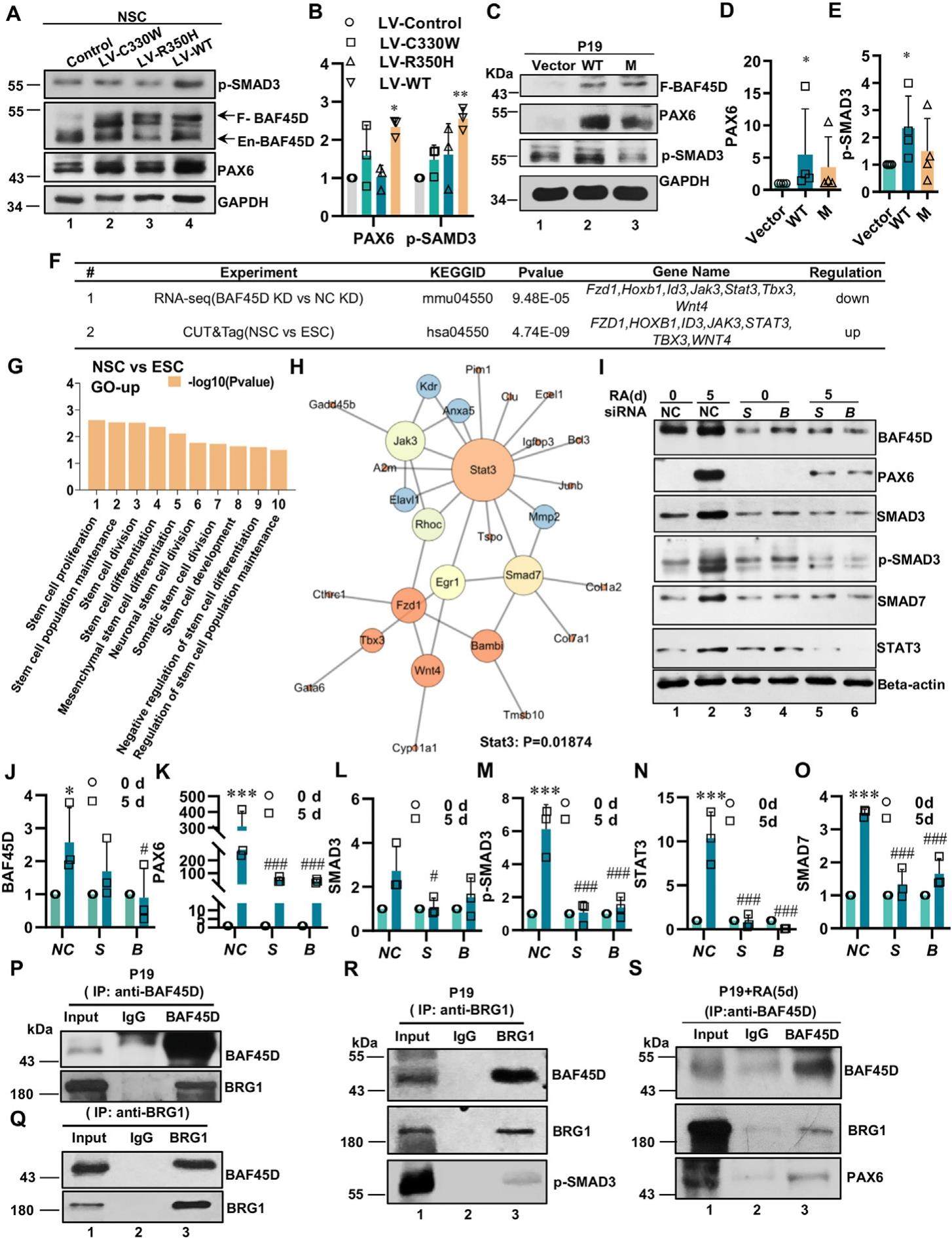
BAF45D regulates spinal cord neural stem/progenitor cell fate through the SMAD-PAX6 axis


Mutations in BRG1-associated factor 45D (BAF45D, also known as double PHD fingers 2 (DPF2)) are linked to Coffin-Siris syndrome (CSS). However, the underlying molecular mechanisms remain ill-defined. Here, we identified that wild-typebutnotCSS-associatedBAF45Dmutants increased the expression of PAX6, a neural stem cell marker, and phosphorylated SMAD3 (p-SMAD3) in spinal cord neural stem cells (NSCs) derived from H9 human embryonic stemcells. BothBAF45DandSMAD3are required for the induction of p-SMAD3 and PAX6 together with STAT3 and SMAD7 by retinoic acid (RA). In the presence of RA, BAF45D knockdown decreased the expression of genes that regulate stem cell pluripotency. Moreover, the same genes in the spinal cord NSCs had more binding sites with BAF45D than those in H9 cells. Furthermore, Gene Ontology (GO) assay results indicated that BAF45D targets more pathways responsible for stem cell maintenance in NSCs. Finally, BAF45D is associated with BRG1, p-SMAD3, and PAX6. Together, these findings suggest a role for BAF45D in modulating PAX6 expression through SMAD signaling, highlighting the importance of BAF45D in neural stem/progenitor cell fate commitment.
